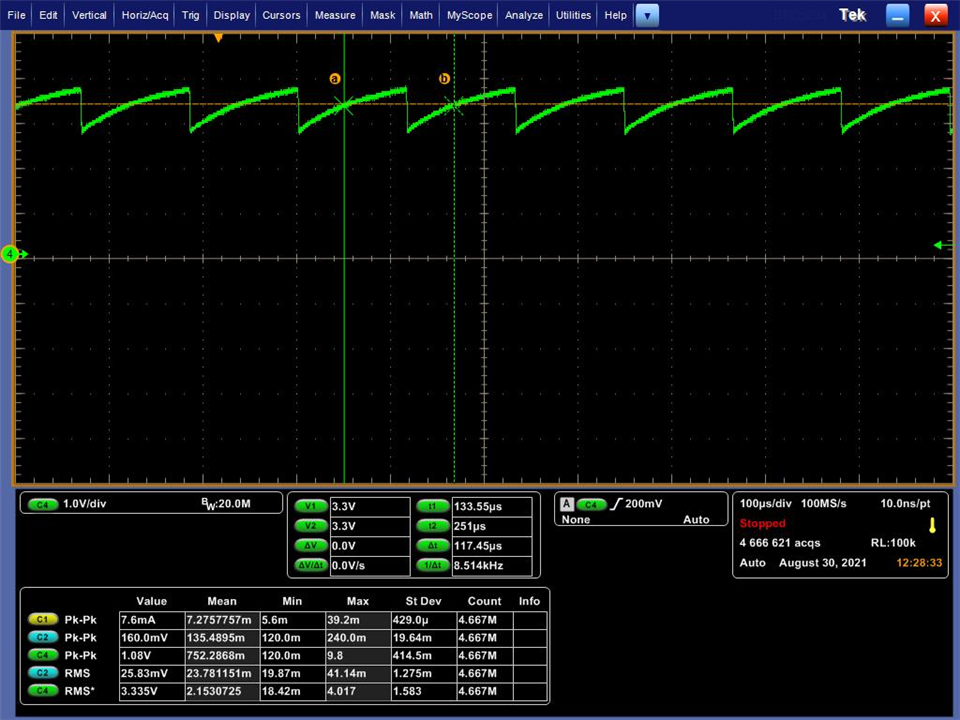Other Parts Discussed in Thread: TPS5401
Hello,
I have a custom board that uses the TMS320F280041PZ, and right now I am unable to connect to it with the XDS200 USB debug probe.
Right now, my biggest lead is an irregularity I noticed when probing the TDI line of the JTAG circuit (see below image).
The switching waveform does not match what I see on other working boards with different processors.
I have verified that it is the processor that is responsible for this behavior by using two different 3.3V power supplies (1 external benchtop, and one on-board buck regulator).

Here is the error report:
[Start: Texas Instruments XDS2xx USB Debug Probe_0]
Execute the command:
%ccs_base%/common/uscif/dbgjtag -f %boarddatafile% -rv -o -S integrity
[Result]
-----[Print the board config pathname(s)]------------------------------------
C:\Users\mblack4\AppData\Local\TEXASI~1\
CCS\ccs1040\0\0\BrdDat\testBoard.dat
-----[Print the reset-command software log-file]-----------------------------
This utility has selected a 560/2xx-class product.
This utility will load the program 'xds2xxu.out'.
The library build date was 'Jun 25 2021'.
The library build time was '16:23:59'.
The library package version is '9.4.0.00129'.
The library component version is '35.35.0.0'.
The controller does not use a programmable FPGA.
The controller has a version number of '13' (0x0000000d).
The controller has an insertion length of '0' (0x00000000).
This utility will attempt to reset the controller.
This utility has successfully reset the controller.
-----[Print the reset-command hardware log-file]-----------------------------
This emulator does not create a reset log-file.
-----[An error has occurred and this utility has aborted]--------------------
This error is generated by TI's USCIF driver or utilities.
The value is '-233' (0xffffff17).
The title is 'SC_ERR_PATH_BROKEN'.
The explanation is:
The JTAG IR and DR scan-paths cannot circulate bits, they may be broken.
An attempt to scan the JTAG scan-path has failed.
The target's JTAG scan-path appears to be broken
with a stuck-at-ones or stuck-at-zero fault.
[End: Texas Instruments XDS2xx USB Debug Probe_0]

